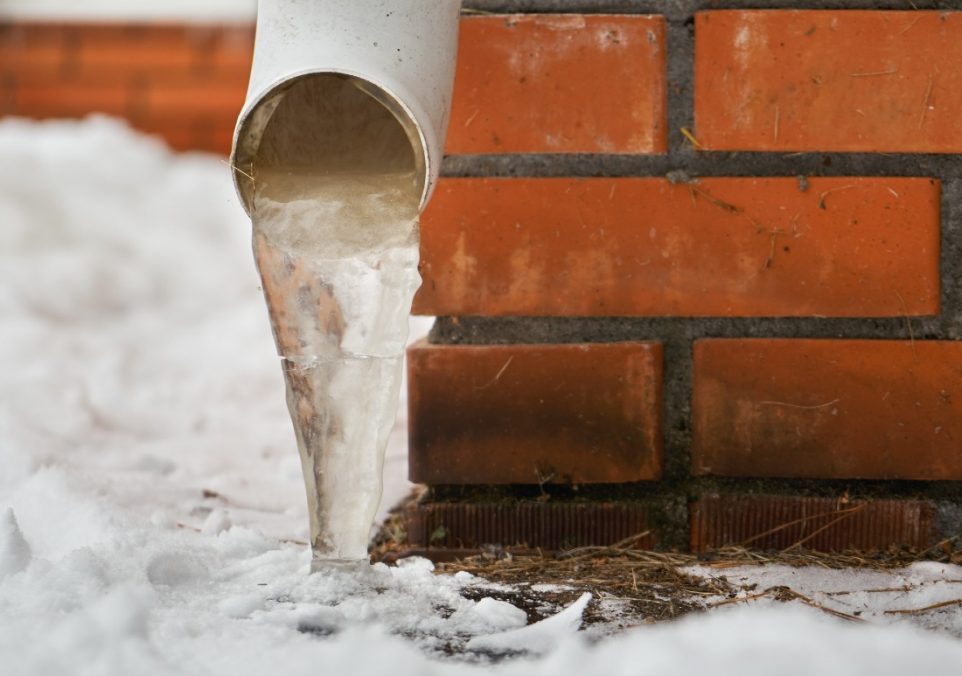Why Do Pipes Freeze and How to Fix Them

It’s time to gear up for the winter season—when the weather’s icy grip can potentially wreak havoc on your home’s plumbing. In this article, we’ll answer the burning question: At what temperature do pipes freeze? Let’s dive into the fascinating world of pipe freezing and fixing. We’ll give you the knowledge you need to prevent and fix this chilly catastrophe.
Understanding the Basics of Pipe Freezing
The main cause of frozen pipes is exposure to cold temperatures. However, other factors, such as inadequate insulation, poor building design, and lack of heat, can contribute to the likelihood of pipes freezing.
Pipes located in unheated areas such as basements, attics, crawl spaces, and exterior walls are particularly susceptible to freezing.
Having the Right Tools
When dealing with frozen pipes, having the right tools is essential. One indispensable tool is an adjustable wrench, which is crucial for loosening and tightening pipe fittings. Additionally, you’ll need a heat source to thaw frozen sections of the pipe safely.
Insulating materials such as pipe sleeves or heat tape can also be handy for preventing future freezing. Finally, keep a bucket or towels on hand to catch any water that may leak when the pipe thaws and starts flowing again.
Factors Affecting Pipe Freezing
Outside Temperature and Wind Chill Factor
The lower the outside temperature and the higher the wind chill factor, the more susceptible pipes are to freezing. Wind can cause rapid heat loss from pipes, increasing the risk of freezing.
Insulation and Condition of Pipes
Well-insulated pipes are less likely to freeze than those with inadequate insulation. Additionally, pipes in good condition without cracks or leaks are less prone to freezing.
Water Flow and Pipe Diameter
Slow water flow, caused by partially closed valves or clogged pipes, increases the likelihood of freezing. Smaller pipes are also more susceptible to freezing compared to larger ones.
Temperature Threshold for Pipe Freezing
General Freezing Point for Water
Under normal circumstances, water freezes at 32 degrees Fahrenheit (0 degrees Celsius).
Factors That Influence Freezing Point
Several factors can influence the freezing point of water, including impurities, dissolved solids, pressure, and the presence of antifreeze.
At What Temperature Do Pipes Typically Freeze?
Pipes typically start to freeze when the temperature drops below 20 degrees Fahrenheit (-6 degrees Celsius). However, this can vary depending on the factors mentioned earlier.
Signs of Frozen Pipes
Loss of Water Pressure
Frozen pipes often result in a noticeable decrease in water pressure or a complete lack of water flow.
Unusual Sounds Coming From Pipes
Gurgling or banging noises coming from pipes can indicate frozen sections or the potential for pipes to burst.
Visible Frost or Condensation on Pipes
If you notice frost or condensation forming on the exterior of pipes, it is a strong indication that they’re frozen.
Preventive Measures for Avoiding Frozen Pipes
Insulating Exposed Pipes
Adding insulation to exposed pipes, especially in unheated areas, can help prevent freezing. You can use insulation sleeves or foam to wrap pipes and reduce heat loss.
Using Heat Tape or Pipe Sleeves
You can wrap heat tape around pipes to provide a consistent heat source and prevent freezing. Alternatively, pipe sleeves with built-in heating elements can be useful as well.
Allowing Water to Trickle Through Pipes During Cold Weather
Allowing a small trickle of water to flow through faucets connected to vulnerable pipes can prevent freezing. Moving water is less likely to freeze compared to stagnant water.
Thawing Frozen Pipes
Safe Methods of Thawing Pipes
It is crucial to thaw frozen pipes safely to avoid causing further damage. Never use open flames or high heat sources directly on the pipes, which can lead to pipe damage or fires.
Using a Hairdryer or Heat Lamp
A hairdryer or a heat lamp effectively thaws frozen pipes. Start from the nearest faucet and work your way toward the frozen section, applying heat until the water starts flowing.
Applying Warm Towels or Hot Water Bottles
Wrapping warm towels around frozen pipes or placing hot water bottles near them can help thaw the ice inside. Be cautious not to overheat the pipes, as sudden temperature changes can lead to cracking.
Steps to Take After Thawing Pipes
Inspecting for Damage or Leaks
Once the pipes are fully thawed, carefully inspect them for any signs of damage or leaks. Look for cracks, bulges, or moisture around the pipes.
Running Water To Flush Out Any Remaining Ice
Turn on the faucets connected to the previously frozen pipes and let the water run for a few minutes to flush out any remaining ice.
Seeking Professional Assistance if Necessary
If you encounter significant damage or suspect that the pipes may have burst, it is essential to seek professional plumbing assistance to assess and repair the situation.
Conclusion
Taking proactive measures to protect your pipes from freezing can save you time, money, and the headache of dealing with the aftermath of burst pipes. By staying vigilant and implementing the preventive measures outlined in this article, you can enjoy peace of mind during winter and keep your home’s plumbing in top shape. So, don’t let frozen pipes leave you out in the cold—take action today and safeguard your home!